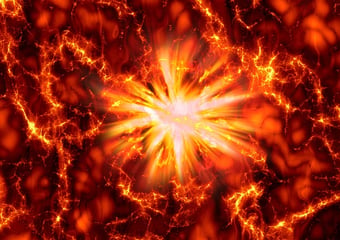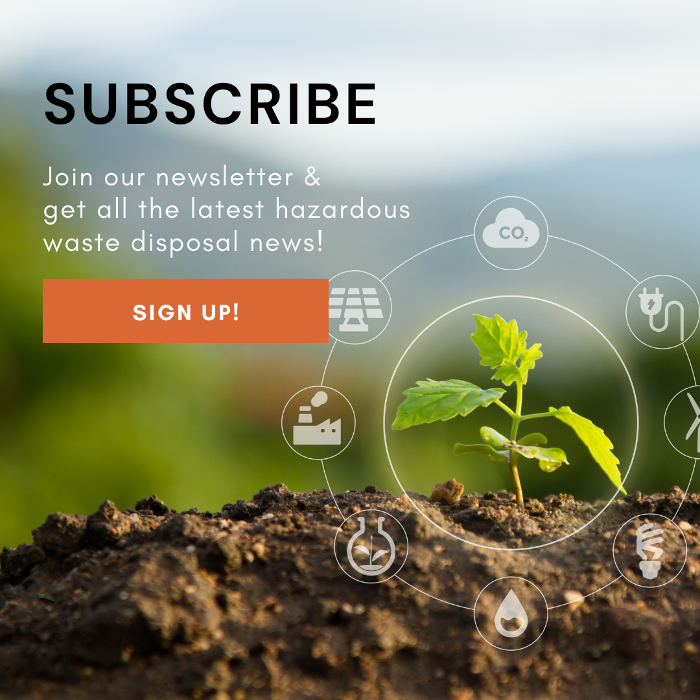Designed to detonate, materials found in the U.S. Department of Transportation’s Hazardous Waste Class 1 Explosives category contains a wide range of potential threats.
Many substances within this category are designed to cause an explosion, and these substances pose significant threats if not properly managed. If your company uses these items for operations or transports them, it’s critical to ensure these materials receive special handling and disposal.
How Class 1 Explosives Are Categorized
The U.S. Department of Transportation (DOT) Hazard Classification System categories the Hazardous Waste Class 1 Explosives category into six divisions, 1.1-1.6. These goods are sorted based on the predominant hazard of the dangerous substance. This hazard is caused by a substance’s chemical and physical properties.
The lower the division number, the higher the hazard the substance presents. If the right circumstances are present, explosives can react violently. This can cause catastrophic damage to surroundings through high temperatures, speeds and pressures.
1.1 Mass Explosion Hazard
 Division 1.1 Explosives are organized based on their potential to cause mass explosions. Even a small ignition source will cause the entirety of a Division 1.1 substance to react instantaneously with violent and terrible force.
Division 1.1 Explosives are organized based on their potential to cause mass explosions. Even a small ignition source will cause the entirety of a Division 1.1 substance to react instantaneously with violent and terrible force.
Gunpowder, certain fireworks and rocket fuel are easily recognizable examples of Division 1.1 Explosives. Likewise, trinitrotoluene (better known as “TNT”) is an example that is commonly utilized in a number of industries for its explosive properties.
1.2 Projection Hazard
Not all Hazardous Waste Class 1 Explosives are dangerous due solely to their explosive properties. For example, the risk from Division 1.2 Explosives comes from the substance’s tendency to emit dangerous projectiles with its explosive force. Numerous forms of ammunition and grenades are designed to project harmful shrapnel upon explosive impact.
1.3 Fire Hazard
Similarly, Division 1.3 Explosives carry the threat of a fire hazard in addition to projection or explosive properties. The flash powder used in pyrotechnics and fireworks is a common example of this type of explosive hazard.
1.4 Package Confined
The final three divisions, 1.4, 1.5, and 1.6, carry lessened risks compared to Division 1.1 explosives, but are still dangerous in their own right.
Division 1.4 substances, like those found in signal flares, cause minor explosions that are mostly contained to their own packaging. Other examples include tracers for ammunition, certain types of fireworks and weapon cartridges, and distress signals.
These substances only present a small hazard if they are ignited during transport. Even if this occurs, the package they are being transported in largely confines any hazards from the explosion, such as large projectiles.
1.5 Insensitive Substances
Division 1.5 Explosives have the potential to cause mass explosions (like 1.1 Explosives) but are inert in most conditions. Although the substances have the potential to create a mass explosion hazard, they are so insensitive that the probability of detonation occurring is very little.
An example of this blasting agent is an ammonium nitrate-fuel oil mixture that contains only ammonium nitrate in pellet form and fuel oil.
However, if large quantities of these substances are transported by ship, there is a greater opportunity for detonation. That’s why the stowage provisions for Division 1.5 substances are the same as Division 1.1 substances.
1.6 Extremely Insensitive Substances
Division 1.6 Explosives carry both minimal sensitivity to ignition and will not produce a mass explosion. These detonating substances are extremely insensitive and demonstrate a negligible probability of initiation that is accidental.
Why Hazardous Waste Class I Explosives Are Regulated
 Class 1 Explosives can cause catastrophic damage to human health, infrastructure and transportation if not properly controlled and regulated.
Class 1 Explosives can cause catastrophic damage to human health, infrastructure and transportation if not properly controlled and regulated.
If a chemical reaction occurs, explosives can produce damaging forces that contain hazardous amounts of smoke, gas, heat and sound. Risks include environmental, property and human health issues.
Environmental Issues
Explosive substances can slowly degrade in the environment. This may then cause them to produce dangerous by-products before they decompose completely, leading to soil contamination, water pollution or air quality issues. How much damage could occur depends on the substance’s composition and how much is released into the environment.
Property Issues
Explosions are most often characterized by their heat, light, sound and pressure. Explosions create a shock wave, which can cause enormous damage to any property nearby.
Human Health Issues
Physical dangers are extensive for people when an explosion occurs. Workers and other victims may experience physical and chemical burns from the heat and substances, ruptured lungs and eardrums from shock waves, and traumatic injuries from flying debris and missiles.
Emitted gasses and fumes can be inhaled, causing internal injuries and long-term health complications.
The Importance of Compliance For Your Company
If your business works with Class 1 Explosives, it’s important to make sure they are transported and disposed of properly. Offering comprehensive training programs for employees who are exposed to hazardous substances also is essential to promote the highest safety standards in the workplace.
We recommend that you work with an experienced hazardous materials services company to:
- Ensure you are in compliance with all state and federal regulations.
- Avoid hefty fines, liability from danger and injury to your employees and others.
- Properly transport and dispose of hazardous wastes and non-hazardous wastes.
If an emergency occurs during transportation of class I explosives or during their use, it’s important to work with a hazardous materials services company that provides a 24-hour hazmat emergency response. This type of service will help you:
- Quickly assess the situation to determine the best course of action
- Implement measures to contain and control the hazardous materials to prevent further spread
- Coordinate with authorities to ensure compliance with safety regulations
- Mitigate risks to reduce the potential for harm
- By providing guidance and support throughout the emergency and clean up of contaminated soil, warehouse, industrial site, storage area or other property type
- Ensure safe cleanup and hazardous waste disposal
It’s also important to note that storing different chemicals in nearby areas or in the same area can cause a chemical reaction. This can start a fire, cause an explosion or produce poisonous gasses. Certain explosive substances must be segregated from one another, including during disposal.
A hazardous waste walk-through can help identify any potential storage issues that could be problematic. The best disposal companies offer this service to help you ensure compliance with safety regulations, optimize storage efficiency and minimize risks.
Whether you require hazardous waste services routinely for regular disposal needs or in cases of emergencies, obtaining a free quote can help you prepare by understanding the costs involved and ensuring timely and efficient management of hazardous materials.


Comment